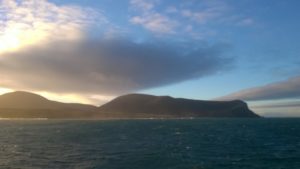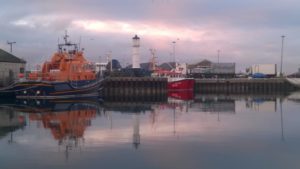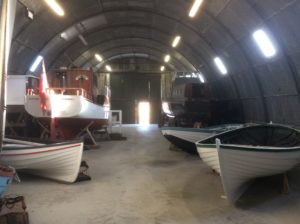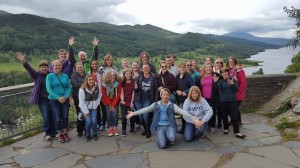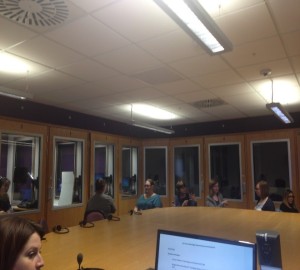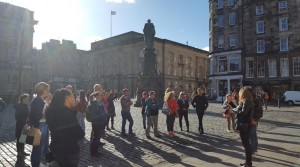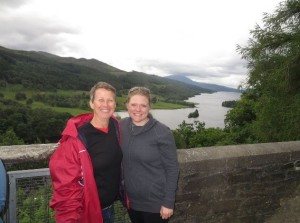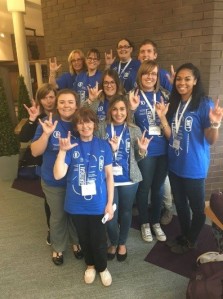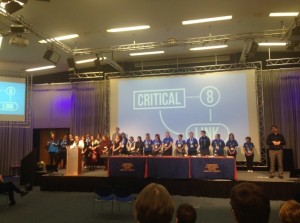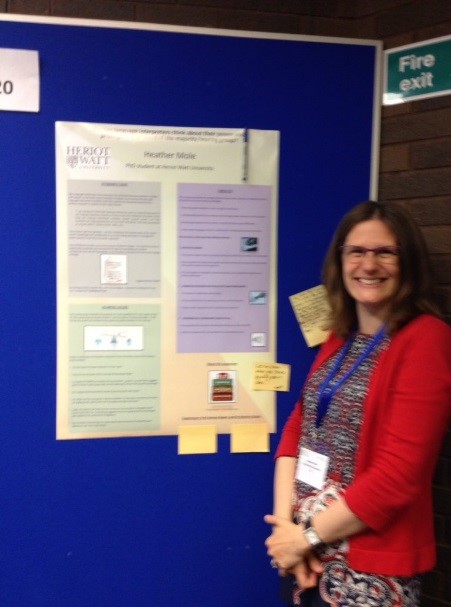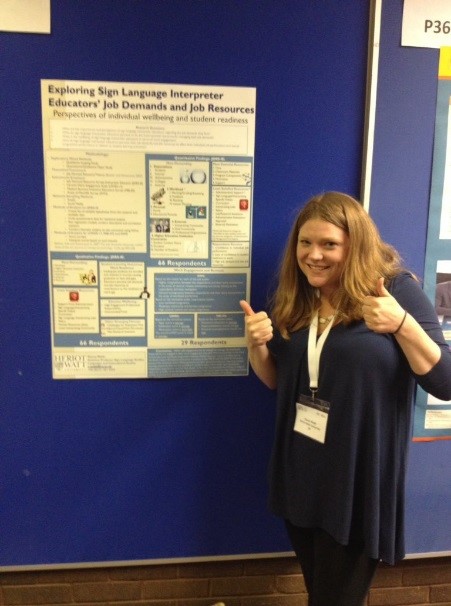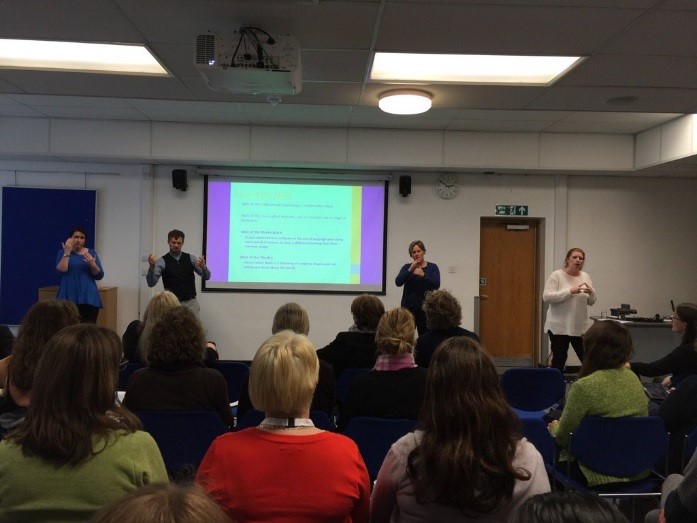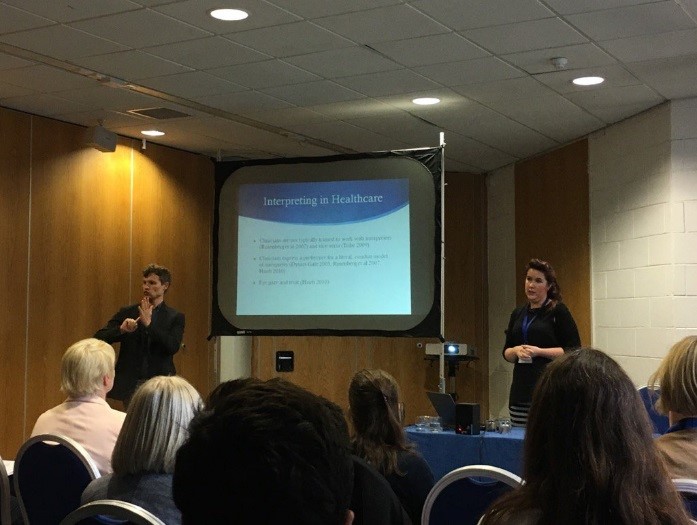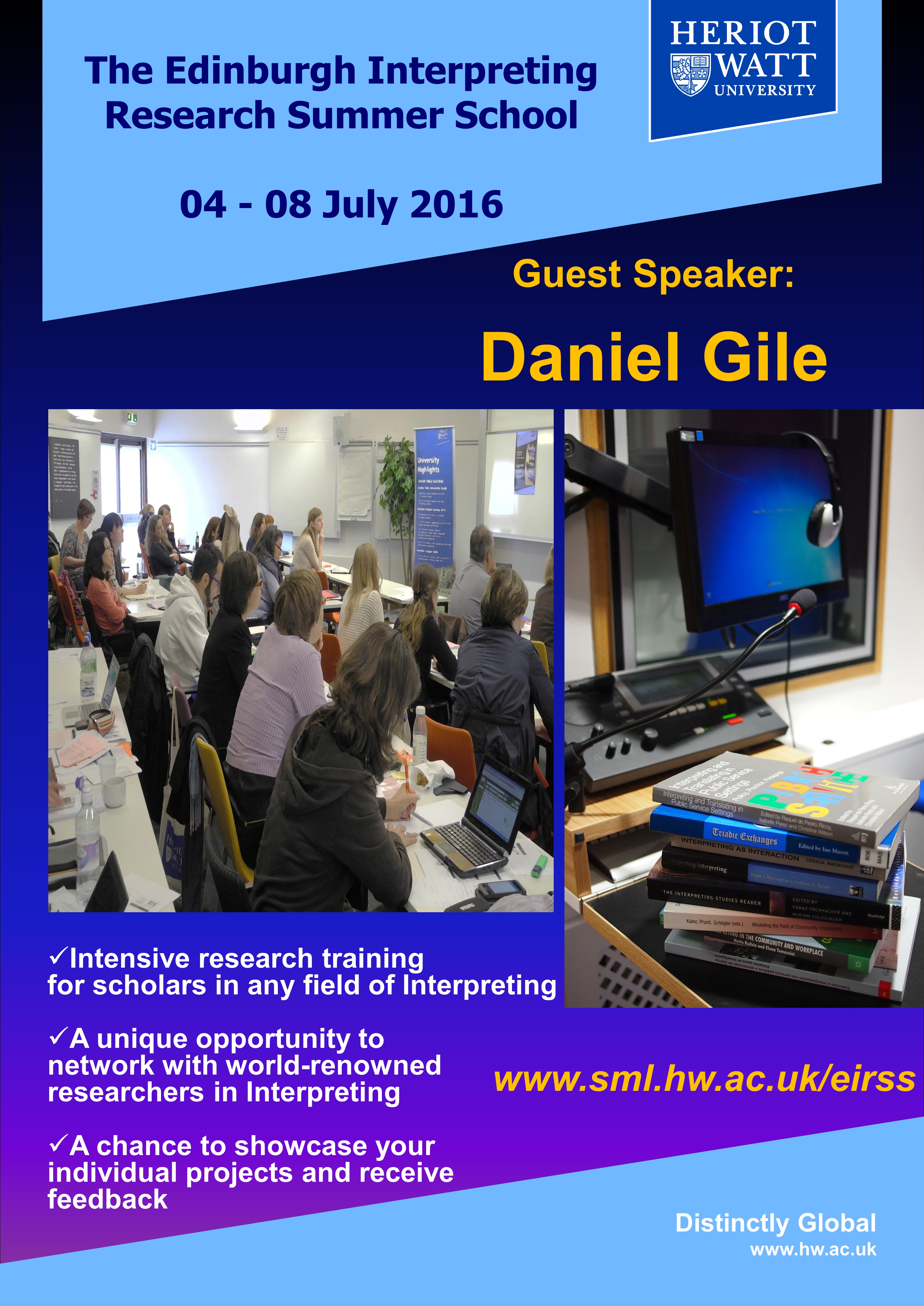by Emmy Kauling, Jemina Napier, Svenja Wurm, Heather Mole and Rob Skinner
For a BSL version of this post, please click here
Last month, the Heriot-Watt BSL-team was well represented at the 2017 Interpretation and Translation Research Symposium at Gallaudet University in Washington, D.C., in the States: Prof Jemina Napier, Dr Svenja Wurm, and three PhD students, Emmy Kauling, Heather Mole and Rob Skinner were accepted to give presentations or present a poster. Since the conference was already a month ago, we decided to remind ourselves of what happened by going through the Twitter feed (#GUSymposium). We recommend you to do the same, it is definitely worth it: you will find lots of quotes and insights from the many inspiring presentations, all focusing on translation and interpreting. A few of the insights we would like to share here:

The president of Gallaudet University (the only university in the world where a sign language, American Sign Language (ASL), is the main language of instruction and communication), who happens to be deaf, stressed the importance of research to inform practice. She uses interpreters on a daily basis and mentioned that, as a deaf person, it is crucial to have an ally in your interpreter. She stated: “What’s important is not what is said in the room, but what’s *not* said in the room”. Which is a challenge for interpreters!


The first keynote was by Beppie van den Bogaerde, explaining how research is embedded in the Dutch undergraduate sign language interpreter training programme. But in order to teach students how to do research (even the day-to-day mini studies that practising interpreters might do), teachers need to be experts in doing research themselves. That way, the Deaf community will benefit from improved services, based on large scientific research and local practical research. This will not only provide ‘feed-back’ to research and training, but also ‘feed-forward’. Key in this is reflection of the interpreters!
After the key note, Svenja Wurm had the privilege of kicking off the parallel sessions with her presentation on the impact of text modalities on translation. Looking into a relatively under-researched area, translation between written and signed language, Svenja highlighted some of the challenges faced by translators to create target texts in situations where parallel texts are limited. Drawing on a case study, she demonstrated that the translator used a pragmatic, culturally sensitive approach, taking into account Hearing and Deaf literacy practices as well as the affordances provided by the different text modalities.

A hot topic during this conference was language ownership and language ideology. It was emphasised by several presenters that both Deaf people and sign language interpreters need to be aware of their own and each other’s language ideologies: what do they expect of each other? And do these ideologies match? And, as professionals, interpreters need to be aware of the impact of their own language ideologies on their service: more positive behaviour could be associated with a certain type of language use, e.g. using the majority language.
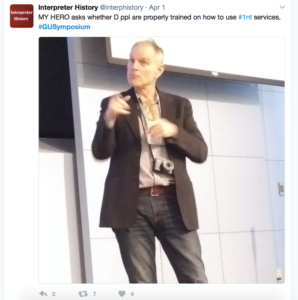
A comment which resonated with many attendees was made by one of the conference participants: if we are talking about interpreting services, is everything just the responsibility of the interpreter? What are the responsibilities of people who use interpreters? Are people trained to use interpreters? This is particularly true for deaf people, who will use interpreters in the course of their lives, in a range of settings.
Jemina Napier gave a total of three presentations throughout the conference which included deaf citizens participating in jury deliberations which she presented with Debra Russell on the first day of the conference. On the second day, Jemina and Rob Skinner presented on the research they have done with Ursula Böser, on police interviews with deaf people. They emphasised that it is important for interpreters to be trained to work with the police; interpreters might cause damage if they don’t understand the goals of the police or why the police ask certain questions. And they showed that an interpreter does not have to feel responsible for translating everything, for example a shrug by a defendant. People shrug all the time in police settings and it is up to the police officer to interpret that and, if necessary, ask for clarification. Finally, Jemina presented on her findings in the Translating the Deaf Self project one of which revealed the pervasive fascination with the interpreter in work settings, taking away the attention from the person in question – the Deaf professional.
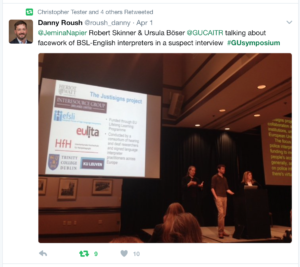
During the afternoon there was a well-attended and popular poster session and reception, which encouraged many fascinating and fruitful discussions amongst conference vistors. Both Rob Skinner and Emmy Kauling (PhD students) presented on their PhD topics – video-meditated interpreting in police settings, and how people experience professional discourse respectively. Both of them were surrounded by intrigued delegates.
The last day’s keynote was by Robert Adam, who focused on the similarities and differences within the sign language interpreting profession, in other words: he presented on Deaf interpreters and hearing interpreters. However, he argued that it is time to talk about language combinations instead of focussing on audiological status, just as it is the case within the spoken language interpreting field.

Just as Svenja Wurm had begun the conference it was Heather Mole (PhD student) who ended the conference, presenting on power and privilege in sign language interpreters’ discourse. She made a point that interpreters are often not trained on how to talk about power dynamics, resulting in a feeling of “I’m sure that I’ve done the right thing here, but I’m not sure!”. Sign language interpreters need a vocabulary to be able to talk about power, to understand their responsibility.
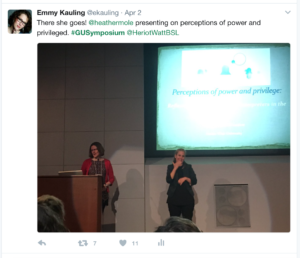
It was wonderful to be part of this conference and the representation of Heriot-Watt University was significant, which was not unnoticed by many of the participants. Not only did we sandwich the conference with presentations but we also made the filling flavoursome as well!

